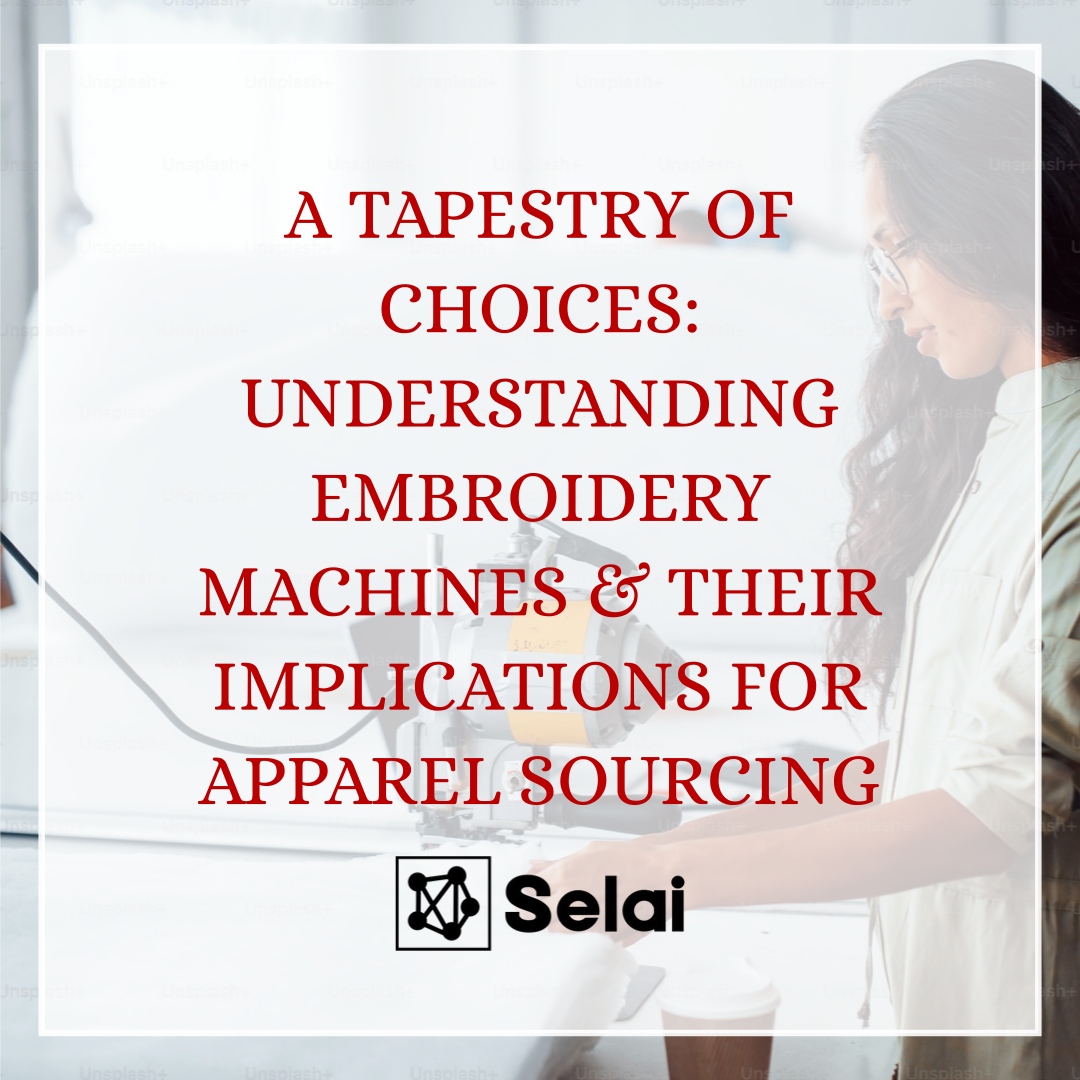
Embroidery serves as a medium to infuse garments with decorative richness and nuanced aesthetics. For apparel stores navigating the sourcing maze, comprehending the diverse landscape of embroidery machines and techniques is crucial. This knowledge allows stores to align their order specifications accurately with manufacturers’ capabilities, ensuring aesthetic fidelity and operational efficiency. Let’s delve into the different embroidery types, their benefits, and the challenges they pose in the apparel sourcing process.
1. Hand Embroidery:
Process:
This traditional method is meticulously done by artisans using needles and threads, creating unique and intricate designs on fabrics.
Benefits:
Unique Artistry: Each piece embodies a one-of-a-kind artisan signature.
Customization Potential: Offers immense scope for bespoke designs.
Versatile Application: Can be applied to varied fabric types and garment styles.
Issues:
Production Time: Highly time-intensive, impacting delivery schedules.
Consistency: Achieving uniformity across multiple pieces is challenging.
Cost: Labor-intensive process can escalate production costs.
2. Machine Embroidery:
Machine embroidery streamlines the decoration process using different machine types, each having unique characteristics, benefits, and implications.
a. Free-Motion Embroidery Machine:
Benefits:
Design Flexibility: Offers creative freedom in design execution.
Versatility: Suitable for varied designs and fabrics.
Issues:
Skill Dependency: Requires experienced operators for precision and quality.
Production Speed: Not ideal for high-volume, fast-turnaround requirements.
b. Single-Head, Single-Needle Machine:
Benefits:
Affordability: Accessible entry point for small-scale needs.
Simplicity: User-friendly operation with minimal complexity.
Issues:
Production Capacity: Limited to one piece and color at a time, impacting output rate.
Design Complexity: Struggles with intricate, multicolored designs.
c. Single-Head, Multi-Needle Machine:
Benefits:
Efficient Color Changes: Multiple needles streamline multicolored designs.
Speed: Faster output compared to single-needle machines.
Issues:
Investment: Higher acquisition cost compared to single-needle variants.
Operational Complexity: Requires skilled handling for optimal output.
d. Multi-Head Machine:
Benefits:
Mass Production: Multiple heads enable simultaneous work on several pieces.
Time Efficiency: Drastically reduces the time required per piece.
Issues:
Space and Investment: Requires substantial space and capital.
Maintenance: Regular upkeep needed for smooth operation.
e. Computerized Embroidery Machine:
Benefits:
Precision and Consistency: Automated processes ensure uniform, error-free output.
Design Sophistication: Facilitates execution of highly intricate, detailed designs.
Issues:
Technical Dependency: Reliance on software and hardware can pose operational risks.
Cost Implications: High acquisition and maintenance expenses.
3. Specialized Embroidery Machines:
a. Schiffli Embroidery Machine:
Benefits:
Scale: Ideal for producing large embroidered fabrics and laces.
Uniformity: Maintains consistent quality across extensive fabric expanses.
Issues:
Capital Intensive: Requires substantial investment and operational space.
Specialization: Demands skilled operators and precise calibration.
b. Bead and Sequin Embroidery Machines:
Benefits:
Decorative Enhancement: Specifically designed to attach beads, sequins, etc., adding value to garments.
Precision Placement: Ensures accurate and secure attachment of decorative elements.
Issues:
Limited Application: Primarily for decorative attachments, not versatile.
Operational Complexity: Multistep process requires precise coordination and skill.
Embroidery, with its myriad techniques and machines, weaves tales of artistic expression and cultural richness into the fabric of garments. For apparel stores, understanding the nuanced implications of each embroidery type is pivotal. This knowledge facilitates informed dialogues with manufacturers, ensuring alignment between design aspirations and production realities. It aids in navigating the intricate dance between aesthetic desires, operational constraints, time efficiencies, and cost implications, allowing the creation of garments that resonate with aesthetic coherence and quality craftsmanship. In this intricate tapestry of threads and colors, informed choices become the loom on which successful sourcing relationships are woven.
